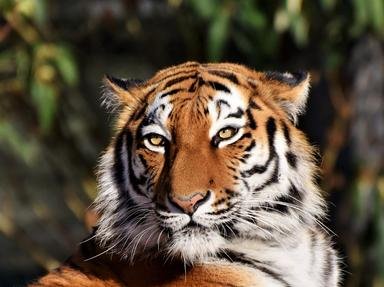Quiz Answer Key and Fun Facts
1. Bob the bobcat is in the genus Lynx so, not surprisingly, he resembles a lynx. Which is one of the distinguishing features that a lynx has over a bobcat?
2. Besides being mistaken for a lynx, Bob the bobcat is also sometimes mistaken for a house cat or even a cougar! What is the average height of an adult bobcat?
3. Bob the bobcat has many relatives as bobcats are the most abundant wild cat in North America. Bobcats can be found in parts of Canada and Mexico and all over the continental U.S. Where are we UNLIKELY to see a bobcat?
4. It's mealtime, and Bob the bobcat is on the hunt for his favorite food. While he'll eat pretty much anything he can catch, he has a preference for which lagomorphs?
5. Now that Bob the bobcat has his meal, he needs to make sure that he doesn't become a meal himself! Cougars and wolves are the main predators that target adult bobcats for food, but which other predator does Bob need to avoid?
6. Like most wild cats, bobcats are solitary creatures, but they'll occasionally be seen in groups. Which of the following groupings is UNLIKELY to be seen?
7. Bob the bobcat had a romantic rendezvous with Bella the bobcat, and a couple months later, Bob's a dad! What is the average litter size for bobcats?
8. Bob the bobcat has taken up residence in a populated area, and some of the homeowners are not too pleased to have a bobcat in the neighborhood. What can they do to encourage Bob to move out?
9. Bobcats are feisty animals and are aggressive when cornered, but most bobcats will avoid humans and aren't likely to attack. What is the most likely cause if a bobcat attacks a human without provocation?
10. Bob the bobcat enjoys his life as a wild animal, but some people keep bobcats as pets. What is one of the main arguments against keeping a bobcat as a pet?
Source: Author
PDAZ
This quiz was reviewed by FunTrivia editor
rossian before going online.
Any errors found in FunTrivia content are routinely corrected through our feedback system.


